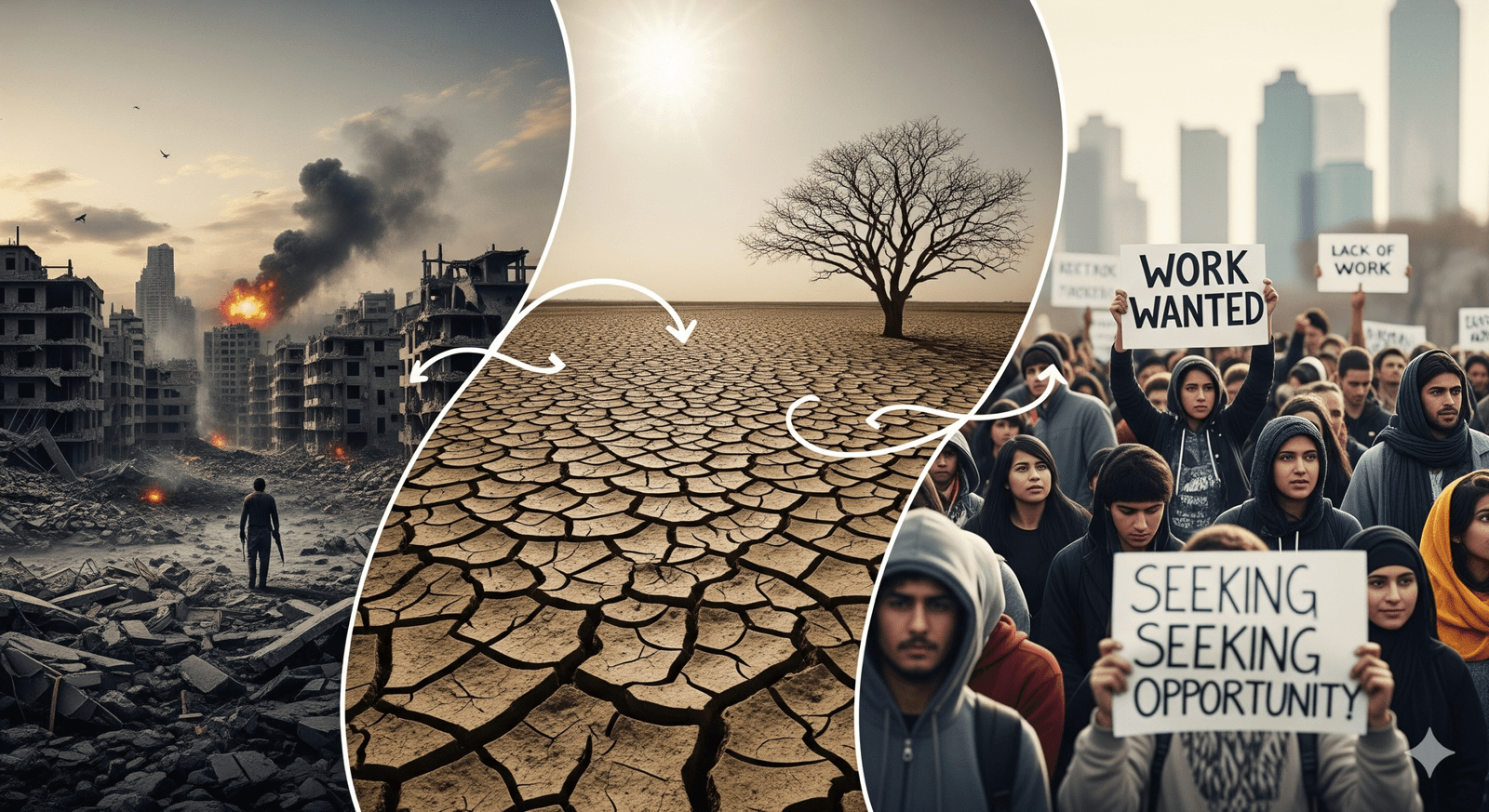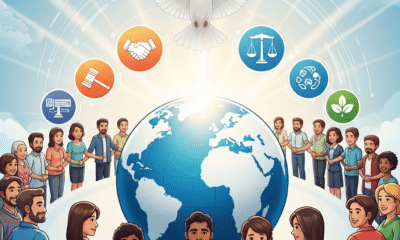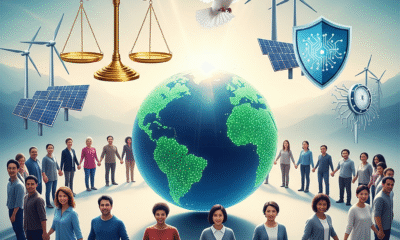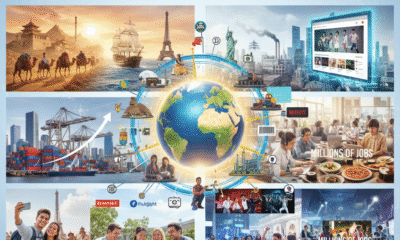Introduction
In today’s interconnected world, migration and humanitarian aid have become defining issues of international concern. Wars, political instability, natural disasters, and climate change have forced millions of people to leave their homes in search of safety and opportunity. According to the UNHCR, there are currently more than 110 million displaced people worldwide—the highest number in recorded history.
While humanitarian aid provides essential relief such as food, shelter, and medical care, addressing migration requires more than emergency responses. It involves complex decisions about peace & security, international relations, sustainable development, global governance, and international law. This article explores how humanitarian assistance and migration management intersect in tackling today’s most pressing global crises.
The Drivers of Migration
- Conflict and War
- Civil wars in Syria, Yemen, and Sudan have displaced millions.
- Peace & security failures often lead to long-term refugee crises.
- Climate Change and Environmental Disasters
- Rising sea levels, droughts, and extreme weather displace communities.
- Example: Pacific island nations like Tuvalu face the risk of complete disappearance.
- Economic Hardship and Inequality
- Lack of opportunities drives labour migration, especially from developing to developed countries.
- Migration is both a survival strategy and an engine for global trade (via remittances).
- Persecution and Human Rights Violations
- Minority groups often face violence and systemic exclusion.
- Example: The Rohingya crisis in Myanmar displaced nearly a million people to Bangladesh.
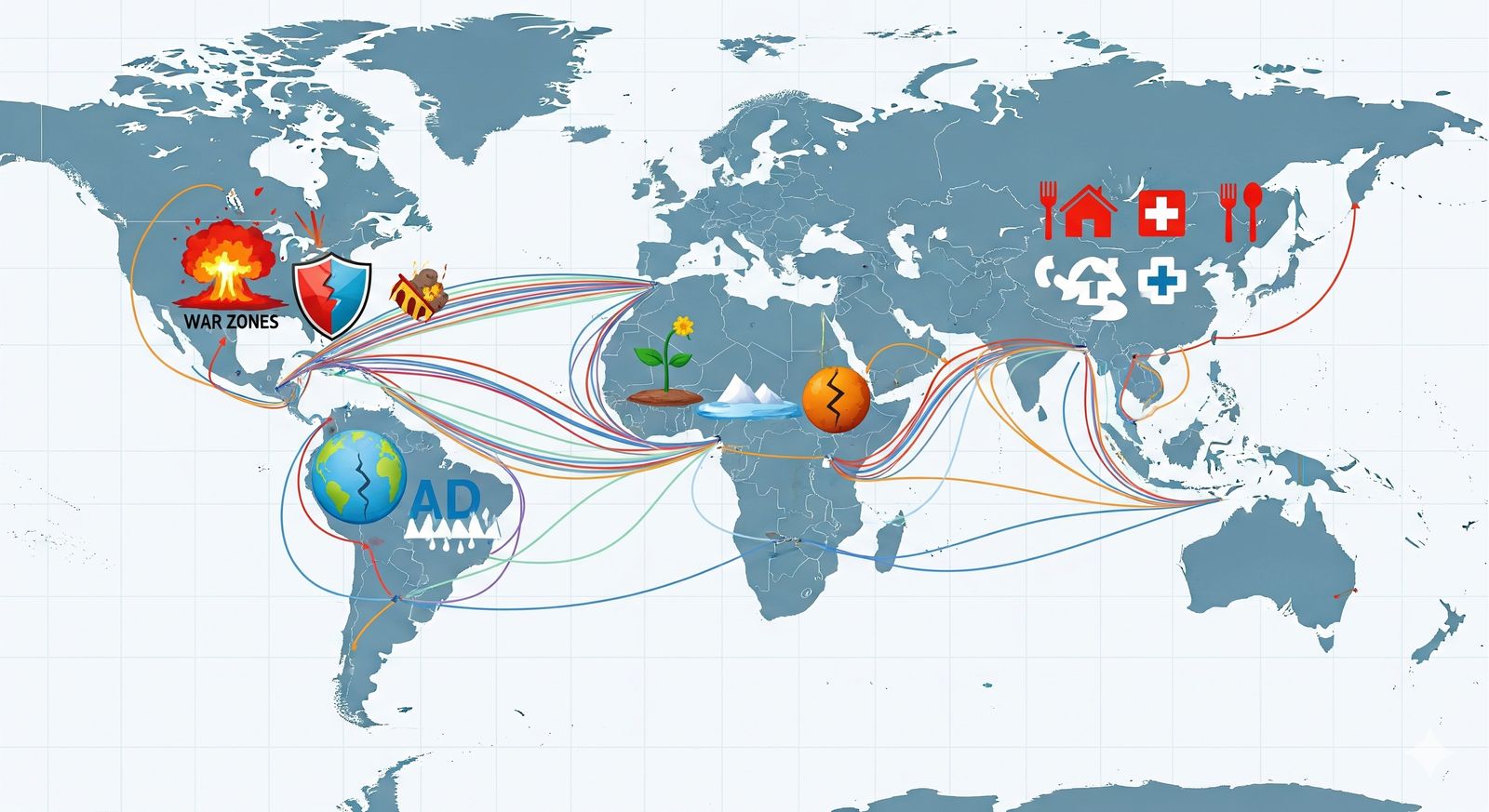
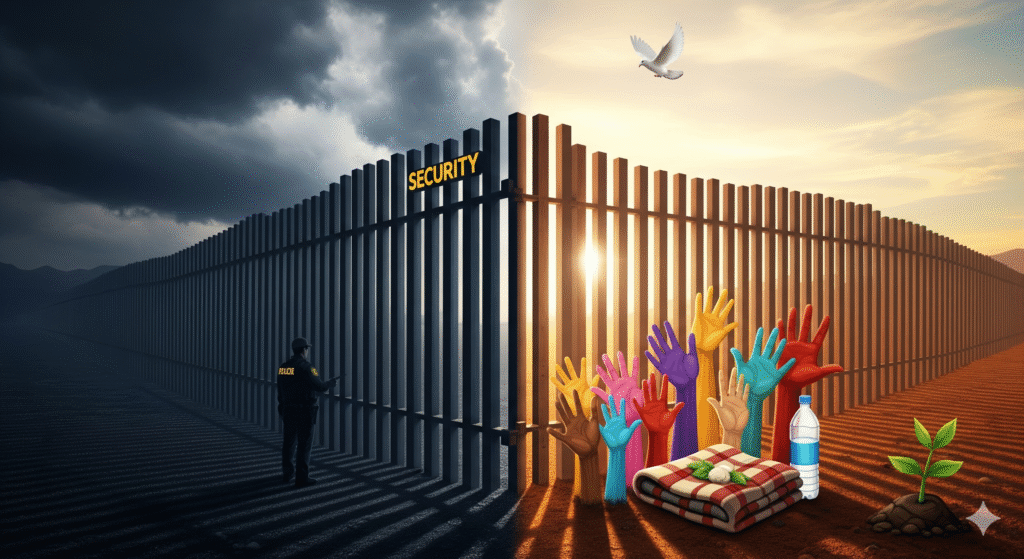

Humanitarian Aid: The First Line of Response
- Emergency Relief
- Immediate needs include shelter, food, clean water, and healthcare.
- Organizations like the Red Cross, Doctors Without Borders, and UNHCR play vital roles.
- Health and Global Health Diplomacy
- Migrants and refugees often face poor living conditions, leading to outbreaks of disease.
- Coordinated responses link global health with humanitarian action.
- Education and Protection
- Education in refugee camps prevents a “lost generation” of displaced children.
- Protection from human trafficking and exploitation is equally critical.
- International Law and Refugee Protection
- The 1951 Refugee Convention outlines the rights of refugees and obligations of host nations.
- However, enforcement often depends on diplomatic relations and political will.
Case Studies: Migration Crises Around the World
- Syrian Refugee Crisis
- Over 6.8 million Syrians fled since 2011.
- Host countries like Turkey, Lebanon, and Jordan struggle with resource strain, while Europe debates migration policies.
- Venezuelan Migration
- Economic collapse forced over 7 million Venezuelans to flee.
- Latin American countries face challenges balancing compassion with domestic constraints.
- Ukraine War Displacement
- Russia’s invasion in 2022 displaced millions internally and across Europe.
- The EU’s Temporary Protection Directive offered swift legal status and aid—an example of rapid collective action.
The Politics of Migration
- Security vs. Compassion
- Governments face pressure to protect borders while upholding humanitarian obligations.
- Rising nationalism and populism complicate refugee resettlement efforts.
- Diplomatic Relations and Burden Sharing
- Migration often strains international relations between source, transit, and destination countries.
- Example: EU–Turkey deal (2016) aimed to manage flows across the Mediterranean.
- Global Governance and Inequality
- Wealthier nations are often criticized for not taking their “fair share” of refugees.
- Developing countries (e.g., Uganda, Pakistan, Ethiopia) host the largest numbers despite limited resources.
Humanitarian Aid as a Tool of International Relations
- Aid Diplomacy
- Countries use humanitarian aid to strengthen alliances and improve their image.
- Example: After the 2004 Indian Ocean tsunami, international relief missions boosted cooperation.
- Humanitarian Aid and Peacebuilding
- Aid can reduce tensions in conflict zones by addressing grievances.
- However, politicized aid risks prolonging conflicts if misused.
- Integration with Sustainable Development
- Aid is most effective when linked to sustainable development strategies.
- Building resilience reduces future migration pressures.
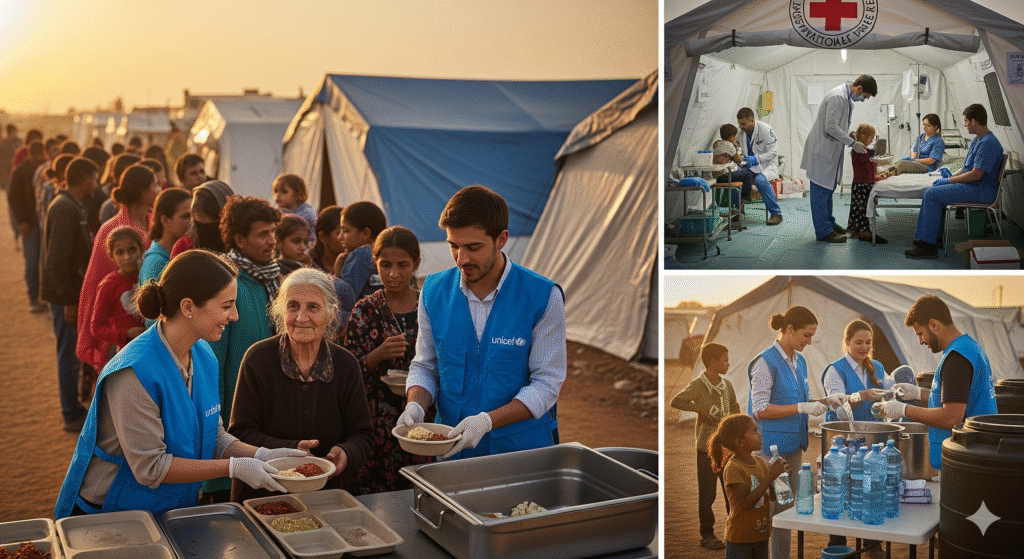
Challenges in Addressing Migration
- Funding Gaps
- UN humanitarian appeals are consistently underfunded, leaving millions without adequate aid.
- Integration vs. Exclusion
- Host countries face challenges in integrating refugees into labour markets and societies.
- Poor integration fosters inequality, marginalization, and sometimes xenophobia.
- Legal and Ethical Dilemmas
- Nations must balance sovereignty with obligations under international law.
- Controversies over detention centres, deportations, and pushbacks highlight the tension.
The Future of Humanitarian Aid and Migration
- Climate Refugees and New Legal Frameworks
- International law currently does not recognize climate refugees.
- A new legal category may soon be necessary.
- Digital Innovation in Aid Delivery
- Blockchain, biometric IDs, and mobile-based cash transfers improve efficiency.
- Data analytics helps track and predict migration flows.
- Global Solidarity and Shared Responsibility
- Migration will remain a global reality.
- Strengthening global governance through UN reform and regional cooperation is essential.
- Focus on Mental Health
- Displacement often leads to trauma and stress.
- Humanitarian programs must expand mental health support for migrants.
Conclusion
Migration and humanitarian aid are deeply intertwined in addressing global crises. While humanitarian organizations provide immediate relief, long-term solutions demand robust international relations, diplomatic cooperation, sustainable development, and effective global governance.
The reality is that migration is not a crisis to be “solved,” but a human condition to be managed with compassion, fairness, and foresight. By embracing cooperation, reforming international frameworks, and addressing root causes like conflict and climate change, the world can ensure that migration becomes not a burden, but an opportunity for shared progress.

